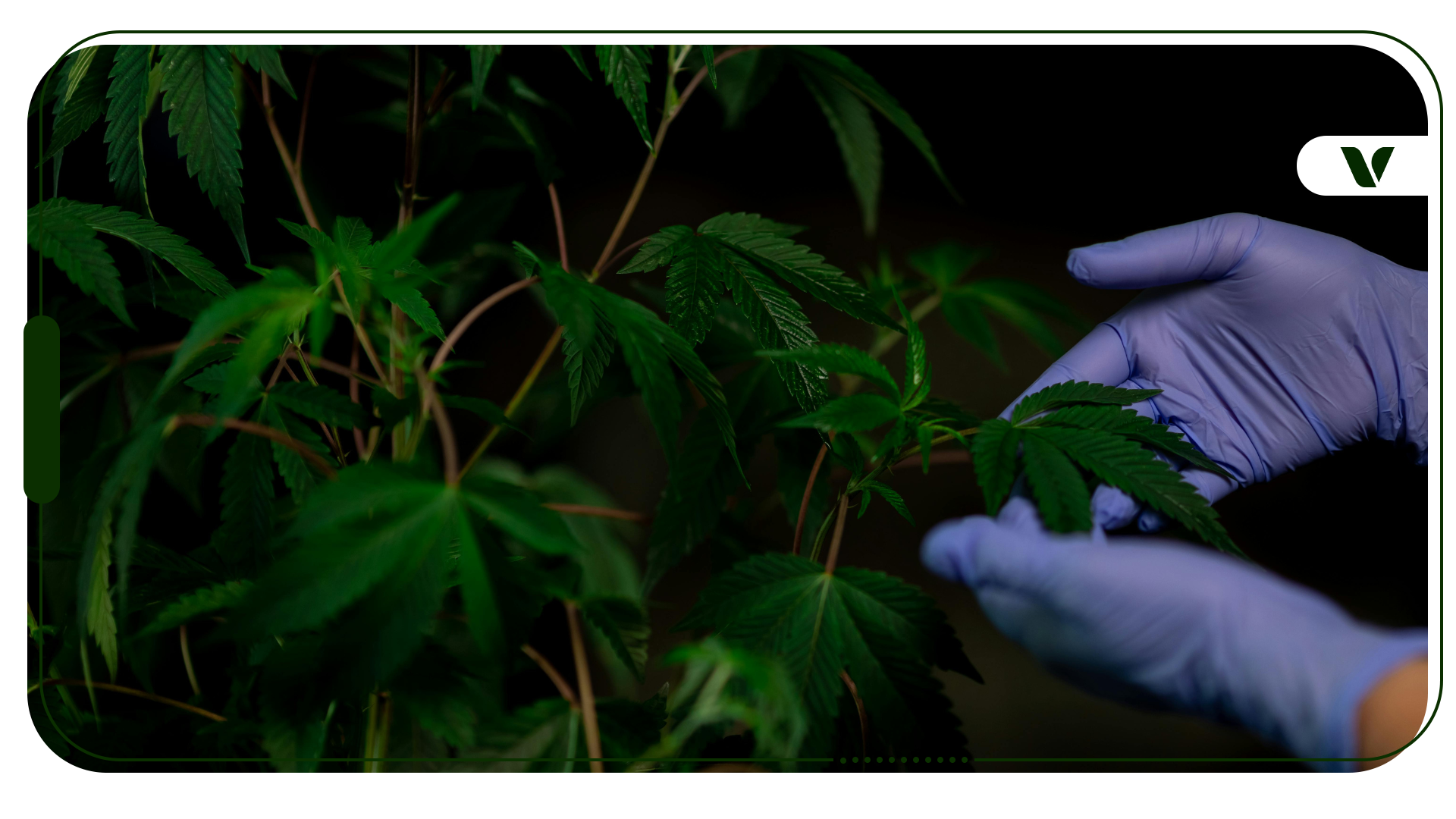Growing cannabis in extreme climates has its unique challenges—and even unique benefits.
These challenges have required cannabis cultivators to develop equally unique and innovative solutions. Whether in desert heat, Arctic cold, high-altitude terrain, or urban settings, each environment still requires cultivators to maintain the proper light, water, temperature, and UV levels needed to grow high-quality cannabis plants.
In this article, you’ll discover how cultivators get creative and grow cannabis in even the most challenging terrains!
Cultivating Cannabis in Desert Conditions
Growing cannabis in arid desert climates is a unique challenge. Still, thriving cannabis plants can be cultivated in even the harshest desert conditions with the right strain selection and innovative techniques.
One significant challenge when growing cannabis in a desert climate is water management. This is due to rapid evaporation caused by intense heat. To use less water, a drip irrigation system is commonly used in this region because it releases water directly to the root zone desert. Deep watering, a method some cultivators use, involves soaking the soil thoroughly but less frequently. This method encourages enhanced root growth, making the cannabis plants more resilient to drought.
Adding polymers or hydrogels can help cannabis cultivators retain soil moisture and release it slowly to the plant roots. Mulching can also effectively maintain moisture by covering the soil and minimizing exposure to the harsh sun.
Soil quality is crucial for growing cannabis in desert conditions. The ideal soil should hold moisture while allowing proper drainage to prevent root rot. A mix of sandy or silty soil and organic matter, along with vermiculite, perlite, or coco coir, can create a well-balanced base that helps with water retention.
Temperature control is another vital factor when growing cannabis in arid climates. Desert climates often have intense heat and low humidity. Although cannabis can tolerate high temperatures, prolonged exposure to extreme heat can stress plants.
To protect the cannabis plants, cultivators use shade cloth during peak sun hours and air circulation around the plants to prevent stagnant, hot air buildup. Cannabis plants thrive in humidity levels between 40% and 70%, commonly at the lower end of that humidity range in desert regions, but it is still acceptable.
Choosing the right cannabis strain is also key for desert cultivation. Sativa strains, native to hot, dry regions, survive better in arid conditions due to their thicker leaves that retain moisture and smaller surfaces that minimize water loss.
Popular desert region-resistant strains include:
- Durban Poison
- Super Silver Haze
- Afghan Kush
- White Widow
- Jack Herer
- Northern Lights
Desert climates frequently have strong winds that can erode soil or stress cannabis plants. Building wind barriers around the growing area or using garden fabric helps cultivators protect plants from strong gusts. Rock borders or planting low-growing cover crops can also prevent soil erosion.
Despite the many challenges of growing cannabis in arid climates, there are some potential benefits. For instance, the low humidity makes it difficult for mold to form, and common pests that prefer damp environments are less likely to affect cannabis plants in drier regions.
Growing Cannabis in the Arctic
Growing cannabis in Arctic regions is wildly challenging—but still offers some surprising advantages for cultivators.
The Arctic is a harsh environment for growing cannabis because of the frigid temperatures, long periods of darkness during the winter, and short, cooler summers. This makes outdoor cannabis growing almost impossible without substantial intervention and innovation.
Cannabis plants require significant light to grow, and the limited daylight hours in Arctic regions severely hinder natural plant development. Even greenhouses in these areas are logistically and financially challenging because of the cannabis plants’ growth environment needs.
Some cannabis cultivators do grow their cannabis plants outdoors, however, using auto-flowering or “day-neutral” cannabis strains as an alternative. These strains do not depend on light cycles to trigger flowering but mature based on age. This allows growers to work around the short summers of the Arctic.
Auto-flowering strains also grow more rapidly than non-auto-flowering strains but still require careful growth methods. Cannabis cultivators can further manipulate light cycles by covering plants with blackout material or using light deprivation techniques that mimic shortening daylight hours and trigger flowering before the fall equinox. These methods create a complete growth cycle before the cold season.
Growing Cannabis in a greenhouse is still technically viable in Arctic regions but requires significant heat management. Twin-wall polycarbonate panels provide excellent insulation while allowing light transmission, and insulated metal panels on the sides enhance heat retention. Heat retention curtains minimize heat loss during cold spells, while smart controllers automate heating and humidity levels.
Humidity control is critical in cold-climate greenhouses to prevent mold. Cannabis cultivators in Arctic regions use horizontal or vertical airflow systems to circulate warm air and maintain consistent temperatures. At the same time, dehumidifiers remove excess moisture and condensation to further protect cannabis crops from mold.
However, indoor cultivation is the ideal method in Arctic climates. This allows cultivators to shield plants from extreme weather and removes the challenges of greenhouse growth. Using high-quality LED or high-intensity discharge (HID) lights, along with temperature controls and automated timers, cannabis plants have the necessities for optimal growth—even in the most frigid conditions.
Why You Should Get Your Medical Marijuana Card
Veriheal has satisfied millions of patients nationwide by giving them access to these benefits
- Larger purchase limits
- Peace of mind
- Enhanced legal protection
- Access to higher potency strains
- Save up to 25% on cannabis purchases
- Skip the line at the dispensary
One surprising advantage of growing cannabis in Arctic regions is the extended daylight hours during the peak of summer. In locations such as Whitehorse, the capital of northwest Canada’s Yukon territory, the “midnight sun” provides 18+ hours of daily sunlight during the growing season. The extended sunlight exposure creates enhanced resin and cannabinoid production, and the low humidity and high altitude reduce the risk of pests and mold.
As temperatures drop quickly after harvesting the cannabis plants, Arctic growers can store them in this naturally cold environment, reducing energy use and costs during the curing and extraction.
Cannabis Cultivation in High-Altitudes
Growing cannabis in high-altitude regions also has its pros and cons. Research shows that cannabis grown in mountainous areas produces a high level of terpenes, cannabinoids, and flavonoids. Cannabis plants grown at higher elevations can offer more pungent aromas and potent effects.
High-altitude growth does have its challenges, however. Certain environmental factors affect cannabis growth in high-altitude areas, like Colorado, such as temperature fluctuations, high winds, increased UV exposure, and shortened growing seasons. High elevations also often have shorter growing seasons, making techniques like germinating seeds indoors a common practice.
Cannabis cultivators can invest in climate control systems, including heaters, coolers, and ventilation fans, which can help prevent plant stress during temperature fluctuations. Greenhouses or hoop houses can also protect from extreme weather conditions.
Watering is also a challenge in high-altitude regions due to quicker evaporation. To counter this issue, cannabis cultivators use specific irrigation and nutrient regimens.
High altitudes have intense sunlight and cooler nights, which promote potent cannabis plants by boosting resin production through increased UV exposure. However, some sun protection is still necessary to prevent plant stress. Shade cloths or protective sprays can help prevent sunburn and reduce plant stress.
While fewer pests harm cannabis plants at higher elevations, cultivators still take preventive measures. Monitoring for pests and plant diseases and performing pest control are vital to growing healthy cannabis plants.
These regional conditions can also lead to extended plant maturation periods. Cultivators in these regions pay careful attention to trichome development before harvest. Harvesting at the ideal time helps cannabis growers ensure the buds are at the highest possible level of potency, flavor, and quality.
Choosing the right strains is also vital for successful high-altitude cannabis cultivation. Indica-dominant strains and hybrids are ideal for high-altitude regions due to their hardiness and resilience to cooler temperature swings.
Vertical Farming and Urban Cultivation
Vertical farming is a way to cultivate high-yielding, consistent-quality medical cannabis in a controlled environment year-round—even with minimal land or space, such as in urban settings. Stacked layers of crops are often incorporated into structures like skyscrapers, warehouses, shipping containers, and greenhouses or utilized in areas otherwise unsuitable for farming. Using vertical growing systems, cannabis cultivators maximize even smaller grow spaces.
This growth method helps lower plant cultivation costs while improving the cultivators’ competitiveness in the medical or recreational marijuana market. While traditional horizontal growing works in many settings, vertical space is often unused. Implementing a vertical grow system utilizes every inch of the space.
Innovative water management allows cannabis cultivars with urban or vertical farms to grow their plants. Many use closed-loop water systems, which reduce water usage and costs by minimizing runoff and recapturing water for treatment and reuse.
While vertical farming offers significant benefits, it still requires careful cannabis cultivation. Before growing cannabis plants, floor levelness, ceiling height, and potential obstructions must be carefully considered. Lighting, irrigation, and airflow are other essential considerations for the growing space.
As the demand for cannabis grows with more and more states legalizing it, especially in urban areas, vertical farming will likely continue to expand.
Growing Cannabis in Space
A company called BioHarvest has developed a way to grow the key active components of cannabis—trichomes. Using a bioreactor, this innovative approach helps researchers focus on cultivating only the essential parts of the cannabis plant. This eliminates the need to grow the entire plant while only producing the beneficial part.
The microgravity conditions in space could even produce cannabis crops with more potent medical properties than what can typically be grown on Earth. Space-grown cannabis might even contain valuable cannabinoids in much higher quantities. This could lead to the potential of creating full-spectrum cannabis plants that offer even more effective treatment options for conditions like palliative diseases.
Unfortunately, BioHarvest’s cannabis isn’t yet approved for International Space Station (ISS) use, and astronauts are prohibited from being high or drunk in space for safety reasons. Still, with space tourism having potential for the future, tourists will likely want to enjoy marijuana or alcohol while in space.
Key Takeaways
Cannabis cultivation in extreme environments, whether in the desert, Arctic, or high-altitude regions, requires meticulous growth strategies. These climates present challenges like temperature fluctuations, UV control, and water management. But with the right approach, cannabis plants can thrive even in the harshest conditions.
As the demand for cannabis continues to grow, these cutting-edge cultivation techniques will likely become an even more crucial part of ensuring there is an adequate supply of high-quality medical or recreational cannabis in even the most challenging cultivation regions.
Author, Share & Comments









